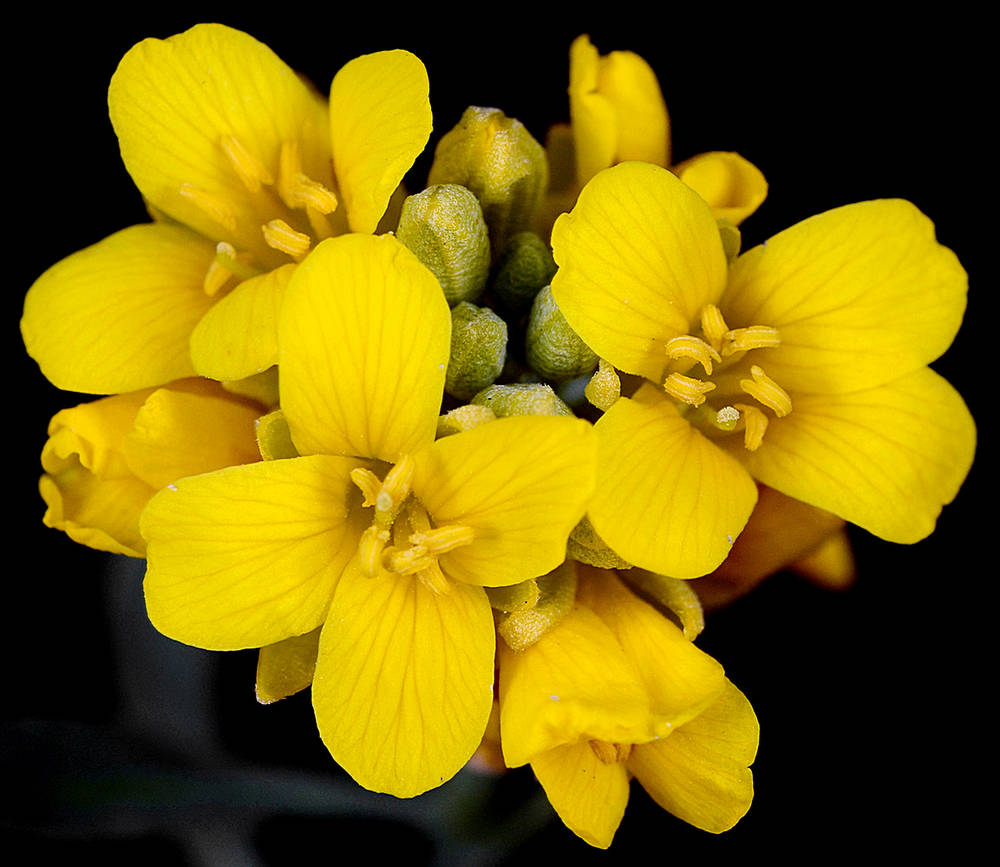Physaria parviflora
Physaria
bladderpod, twinpod
rosulate;
margins entire, dentate, or pinnatifid, usually petiolate.
bases not auriculate.
bracts 0 or rarely basally with bracts.
sepals erect or spreading, oblong to ovate, saccate;
petals broadly ovate or spatulate; > sepals, usually yellow, clawed or not, nectar glands confluent or lateral;
stamens 6, tetradynamous;
anthers obtuse;
ovules 4–28(40) per ovary;
septa complete or perforate, usually with apical midvein extending to center;
styles distinct;
stigmas entire.
dehiscent silicles, latiseptate, or angustiseptate, inflated or not, globose, ellipsoid, oblong; ovoid, or didymous; terete, unsegmented;
valves not torulose; replums rounded.
biseriate, often suborbicular, flattened, lenticular or plump, mucilaginous or not when wetted; wingless or rarely winged or margined;
cotyledons accumbent.
stellate or scurfy; short-stalked or sessile.
Physaria parviflora
Physaria
Asia, North America, South America. 106 species; 6 species treated in Flora.
Recent work has shown that Lesquerella is indistinct from the genus Physaria, and both genera have been united under Physaria.
Ihsan Al-Shehbaz
- Local floras:
CA,
OR,
WA
- Local Web sites:
CalFlora,
CalPhotos,
Flora NW,
PNW Herbaria
WildflowerSearch
iNaturalist (observations)
USDA Plants Database
- LBJ Wildflower Center
- SEINet
- Plants of the World Online
- Encyclopedia of Life
- Wikipedia
- Google Image Search


